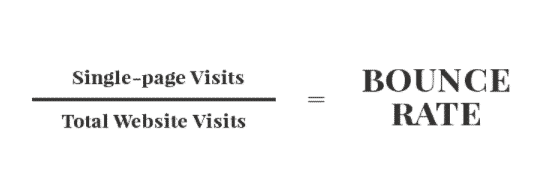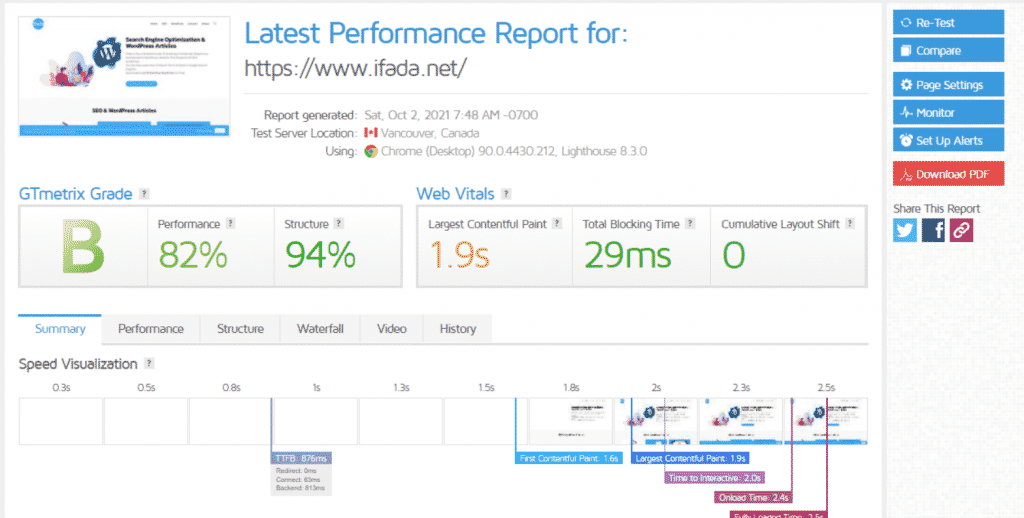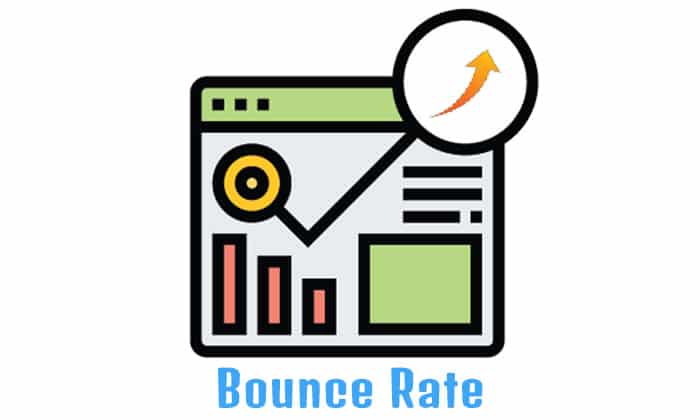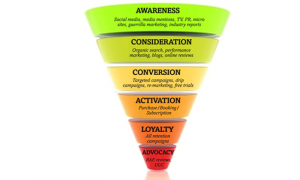If you’re new to the (SEO) scene, chances you’ve encountered the phrase “bounce rate” and understand enough to be aware that the bounce rate that is high is undesirable, while a lower bounce rate is beneficial.
However, there are many concerns about this metric shrouded by myth, and whether or not you have the answers are a different story altogether:
- What is the bounce percentage in Google Analytics?
- How do you know the bounce rate?
- What is a decent bounce rate?
- How can you lower the rate of bounces?
It is said that the Google Analytics bounce rate is one of the most misunderstood metrics of SEO, even by experts in the field. In this article, we’ll attempt to simplify the subject for you. We’ll help you make an understanding of your website’s bounce rate and show you how to increase bounce rates and hopefully increase your conversion rates in the process.
What Is Bounce Rate (and Why Should You Care)?
Let’s begin with the most crucial query What is the bounce rate of Google Analytics? “Bounce” is the term used to describe a “bounce” as a single-page session on your website, and the bounce rate for your website is the proportion of users who leave your website after having only viewed one page. Visitors who are bounced “bounce” off your site and do not take any action after the page they landed on.
Visitors could bounce off your website in any or more of the following ways:
- Clicking on an external link
- “Back” button to leave the site “back” button to leave your website
- Closing the window or tab on your page
- Entering a new URL
- Being shut down through an expiration timeout for sessions
If you’re experiencing a large number of users visiting your site and then departing without having taken any of the conversion actions, it’s likely that your pages aren’t operating at their best. However, before you dive to the root of the issue, it is necessary to take a closer look at the bounce rates Google Analytics is showing you and what it signifies.
How to Find and Measure Your Bounce Rate

Once you’ve figured out how to determine and analyze your bounce rate on your website for yourself, you will be able to become entangled in the complexities of how you can improve your bounce rate.
What is the bounce rate of Google Analytics, and how can you comprehend the data?
You’ve probably noticed the numbers that you see on the analytics page constantly increasing and causing stress. With SEMrush listing the bounce rate Google Analytics provides as the fourth-most-important ranking factor on search engine results pages (SERPs), it’s not hard to see why the number is something worth paying attention to.
What’s an appropriate bounce rate?
A lot of experts have provided their opinion. However the general extremely general opinion is that it’s somewhere between 40 and 50 percent. The majority of websites have bounce rates that range between 41 and 51 percent, and a terribly high bounce rate falls around the 70-plus percent zone.
To get the most information to gain the most value from Google Analytics bounce rate, you should set benchmarking to see a visual representation of the bounce rate average within your business. By benchmarking, you’ll be able to see section-specific bounce rates and get a better sense of where your website will fall.
The first number you focus on will be your Audience Overview report, which gives the total bounce rate for your website. If you’re confident operating in Google Analytics, however, you must look at your data from various angles. For instance, the All Pages report, for instance, provides the bounce rates for individual pages, while the Channels report provides the percentages for every channel grouping.
Whatever reports you study, it’s a good idea to consider that a lower Google bounce rate (as when compared with the industry standard) indicates that you have a greater chance of turning visitors into buyers. An increase in bounce rates, as a result suggests that your site isn’t doing a great job of interacting with your customers, and you’re losing many leads. This is the case to a certain extent; however, like everything SEO-related, the bounce rate that Google Analytics shows you isn’t all that straightforward.
Myths About Bounce Rate
Google bounce rate shouldn’t be taken for granted. The difficult thing to come to understand is that the presence of a high bounce rate does not necessarily mean a bad web page. One thing to note is that the bounce rate average can vary by industry business-to-business (B2B) companies are, for instance, and have more bounces than business-to-consumer (B2C) businesses.
If you run an eCommerce company that has a blog component blogs would probably have a significantly different bounce rate and slow down the impressive figures your product pages may be attracting.
The average bounce rate, although an indicator on”the “how,” is blind to the “what” and the “why.” It is possible for users to take a conversion step and then bounce.
It could appear as several different interactions:
Potential customers could discover the information they’re looking for within a single page on your site. They could stay going through the content for 20 minutes and then include their email address in your Call-to-Action (CTA).* Prospects could visit your site, get sold on your products and services, then dial their mobile to call the number that is at the top of the page prior to leaving your site.
A prospective customer may have been interrupted in their browsing (life is unpredictable!) and then return to your website later.
In every case, this person is clearly interested – and the experience, by any other measure, can be considered a success – it is still an enormous, negative bounce.
Answering the question “What is a good bounce rate?” is different for each website. For those who aren’t a webmaster, or analytics specialist, the difficulty is to determine a fair bounce rate for your specific company. In this instance, the case of the services of a Google Analytics services provider that is able to evaluate Google bounce rate along with other pertinent metrics like the time spent on the Page and Average Session Duration might be an investment worth considering.
Although it’s obvious why the bounce rates can’t be assessed on a superficial level however the reality is that if your website has a high bounce rate, but a poor conversion ratio, no matter the field you operate in, something is wrong. This could be related to your website.
Why Are Visitors Bouncing Off Your Site?
When your conversion is low, or the Google Analytics bounce percentage is way off the mark, it’s likely you’ve got an important CRO (CRO) problem on your hands. The main reasons your bounce rate isn’t like it’s healthy as it should include:
- The page you’re viewing is not mobile-friendly. With the wide use of tablets and smartphones (and Google officially introducing mobile-first indexing in March 2021), responsiveness to mobile devices is essential.
- Your title tags and meta descriptions can be confusing. Your visitors could enter your website thinking that they’ll get something, only to be presented with something entirely different.
- Your site is displaying technical issues. In the event that your bounce rates, as well as average time on the page, are also doubtful, your site probably has issues with loading that must be fixed.
- It’s not accessible to users. A poor navigation system and a bad customer experience (UX) could turn the user leave your site in a matter of minutes – after all, there are plenty of results from search engines that can give them the information they need without a lot of effort.
- Visitors arrive on your site via a poor link from a website. Sometimes, with no blame of yours, different websites associate your link with an unrelated word the page’s content does not supply your visitors with the information they’re expecting.
- Your website has poor quality content. When your website’s content quality is poor, you should conduct an entire content audit or seek help from a professional writing service to revise and improve.
- Have a look at your site and consider what could be contributing to your less-than-stellar figures. After you’ve narrowed down your possibilities, it’ll be much easier to pinpoint the best way to boost bounce rates and improve conversion rates.
How to Reduce the Bounce Rate?
Once you’ve got a comprehension of this metric and what it is telling you and the reason why your numbers appear different, and how to reduce bounce rates is simple. It’s time to make changes to your site. If it appears that you have to reduce bounce rates across your website, it’s a clear sign that your content isn’t captivating your customers. Imagine all the lucrative leads that are being lost and the traffic going away!
You could follow these steps to make to ensure improving your bounce rate and an improved website.
Have a look at your Best Pages for Exit
On Google Analytics, locate the report on exit pages. You can reduce bounce rate by comparing the bounce and exit rate of your most popular pages. This will tell you how many people are coming directly to the page and how many of them are arriving via internal linking, and what pages are frequently abandoned, which can help to narrow down those pages that need improvements to be done.
Enhance the Readability of Your Content and Improve Your Content
It’s almost obvious, but it’s actually one of the most effective strategies you can employ to lower bounce rate and improve conversion rates. You must ensure that your users aren’t dissuaded due to something as minor as too much text or an unprofessional layout. Consider:
Is the headline large sufficient and bold?
Have you tried many subheadings?
Are you breaking up your text by bullet points?
Do you have information graphics or images of high quality?
It is a smart idea to review the font’s design and style and how much white space you have on your site. The smallest of changes could provide a solution to reduce bounce rates.
You have to use images and videos.

An excessive bounce percentage is an excellent indication that a page isn’t engaging. However, videos and images can be the best – it’s been proven. You can stop a page from keeping a user’s attention by using the most captivating form of media. Infographics and short videos can keep the attention of your visitors to your content and will keep them engaged (and perhaps looking around) for a bit longer.
Take into consideration the placement of your CTAs.
The solution to decreasing bounce rate may be as simple as a CTA. Examine your CTA buttons carefully, particularly their place in the webpage, as well as the text, color, and size. Affordable CTAs with content that is appealing or provides the real benefit (for instance, a free trial) are a great way to boost conversion. Sometimes, the easiest solution can be the most effective.
Make your site faster

In just a few seconds, your visitors make the decision to visit your site in a matter of seconds. They make their choice based on many aspects, but one of the most important factors is website speed. Pages could be removed because they’re loading slow.
In Google Analytics, you’ll have access to the Page Timings report and look at each individual page in addition to the overall speed of your website. Get started on the pages with the highest traffic and load times that are slower to get the most benefit from your efforts.




